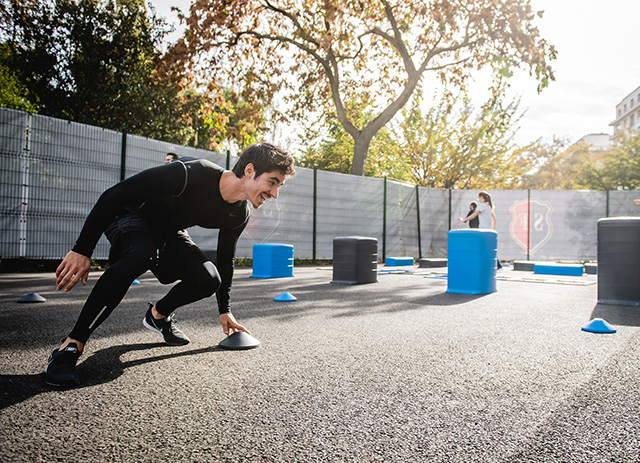Change of direction speed is just one component of agility, as agility is also influenced by balance, coordination, the position of the center of gravity, running speed, acceleration and skill (see our discussion about agility testing). Most change of direction (COD) agility fitness tests use the total time to complete the test to evaluate COD performance. However, much of the time of the test can involve straight running, which makes it hard to distinguish between running speed and change of direction ability.
A new way of assessing the change of direction ability in sports is to use the COD Deficit, a relative measure comparing the time to complete a change of direction task to the time taken to complete the same distance over a straight (linear) distance. See a description of the procedure for conducting a COD Deficit Test.
The COD deficit is a simple way to isolate and identify an athlete's ability to change direction. As straight sprint time is often measured during a fitness assessment, the values required to calculate the COD deficit are usually available, and it would not take too much extra effort to calculate the COD deficit for a squad.
The COD deficit is specific to the agility test being used. The test results will be affected by the number of turns and the angle of those turns. The score will also be affected by the players' running speed (as faster players have to slow down more), and the height and weight of the athlete (there is greater momentum to shift).
 agility testing
agility testingHere are some agility tests that are appropriate to use to calculate the change of direction deficit (CODD)
- Illinois Agility Test (IAT)
- T-Test — running a T-shape course involving forward, lateral, and backwards running.
- 505 Agility Test (180-degree turn)
- Pro-agility shuttle — running 5 yards, back 10 yards, and back again 5 yards, touching the lines with a hand.
- L-Run (3-Cone Drill)
References
- Nimphius, S, Geib, G, Spiteri, T, and Carlisle, D. "Change of direction" deficit measurement in division I American football players. J Aust Strength Cond, (21): 115–117, 2013.
- Nimphius S, Callaghan SJ, Spiteri T, Lockie RG. (2016). Change of Direction Deficit: A More Isolated Measure of Change of Direction Performance Than Total 505 Time. J Strength Cond Res. Nov;30(11):3024-3032.
Related Pages
- Testing procedure for a COD Deficit Test
- List of Agility Fitness Tests
- Discussion about Agility Testing
- About Agility Fitness
- What are the highest ranking sports requiring agility?.


 Current Events
Current Events